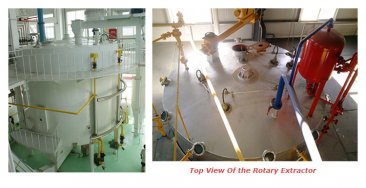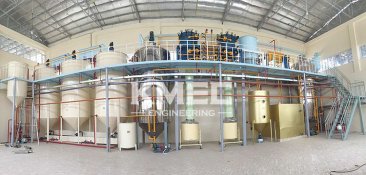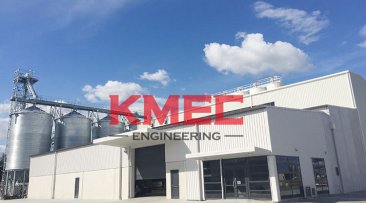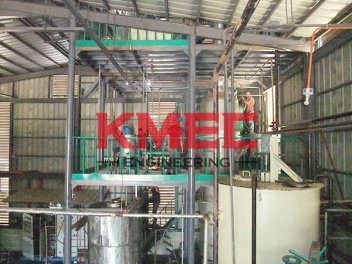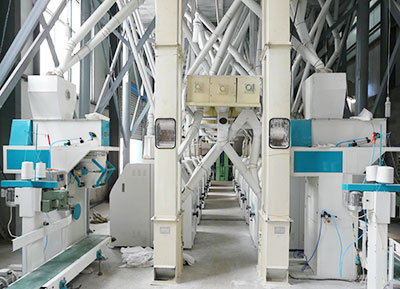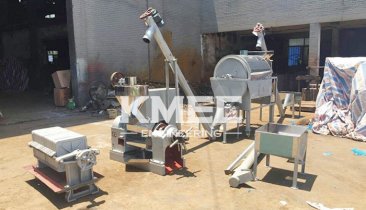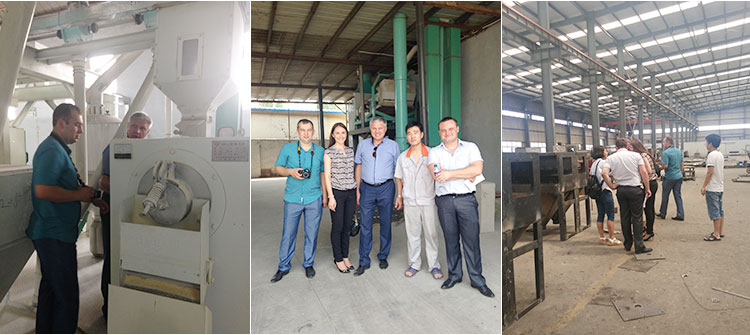solvent extraction
Solvent Extraction Method for Edible Oil
Solvent extraction is a chemical oil extraction method to process oil out from vegetables, oilseeds and nuts by solvent, and Hexane is the preferred choice. Industrial oil processing for the edible oil generally involves the solvent extraction step which may or may not be preceded by pressing. Hexane-based processes have been in commercial operation for a long time. For such processes, it is possible to achieve oil yields in excess of 95% with a solvent recovery of over 95% which in compare to 60 to 70% oil yield by mechanical expeller pressing method. The solvent extraction method will remove all but about ½% of residual oil, uses less hp, and requires less maintenance. It is relatively efficient and reliable, and this is one reason why solvent extraction is the primary means of separating large tonnages of oil from protein meal.Solvent Extraction Plant
KMEC is the leading manufacturer and supplier in the field of solvent extraction and edible oil production in China and also enjoys good reputation across the world. We offer turnkey solutions for solvent extraction plant starting from the plant design and daily running. With years' pratical experience, KMEC can always find the most suitable related solvent extraction equipment for you. With state-of-the-art thchnology of solvent extraction, a team of experienced professionals, and skilled labour, we ensure only superior quality products are provided to our clients at most competitive prices!Solvent Extraction Plant Workshops
So far, we have help set up a great number of solvent extraction projects for various raw materials of vegetable oil seeds and nuts. We will show you some of the extraction workshops below.
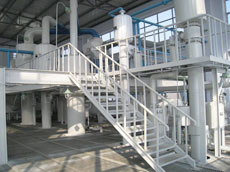 |
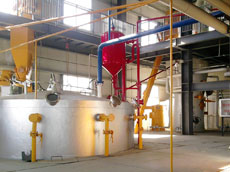 |
 |
| Stripping Tower | Solvent Extractor | SolventExtarction Workshop |
|---|
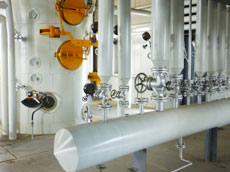 |
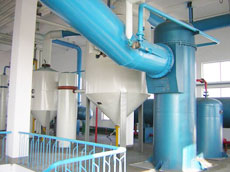 |
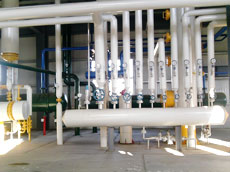 |
| Desolventizer Toaster | Miscella Evaporator | Steam Distributor |
|---|
Advantages of KMEC Solvent Extraction Technics
- Simple in structure with stable performance;
- Additional horizontal grid plate prevents the miscella from flowing back into the material cell to ensure the best extraction effect;
- The wet meal is discharged by the material discharger which continuously discharges the wet meal onto the wet meal conveyor. This avoids meal bridging, un-uniform wet meal discharging and extends the serviceable life of the wet meal conveyor.
- Composed of pre-extraction, extraction and draining sections. There is material turnover in the process of extraction to make the extraction uniform and thorough. Special self-cell solvent spraying ensures the best effect during extraction.
Solvent Extraction Process
Solvent extraction is achieved through the grinding of seed. The ground seed or cake is then purged or washed with a petroleum distillate (the most common chemical used is hexane) which releases the oil in the seed. The solvent is then “flashed off” by heating the oil in a sealed chamber. The oil/solvent blend is next heated to 212º F (100º C) to distill off the solvent.- Preparation of seeds for extraction which includes pre-pressing for high oil content seeds.
- Extraction of oil from the prepared material with the aid of food grade solvent.
- Desolventising-toasting of the de-oiled seed /meal- often combined with drying and cooling of the said meal.
- Distillation, to remove the solvent from the extracted oil.
- Recovery of solvent, which is reused again and again at extractor level.
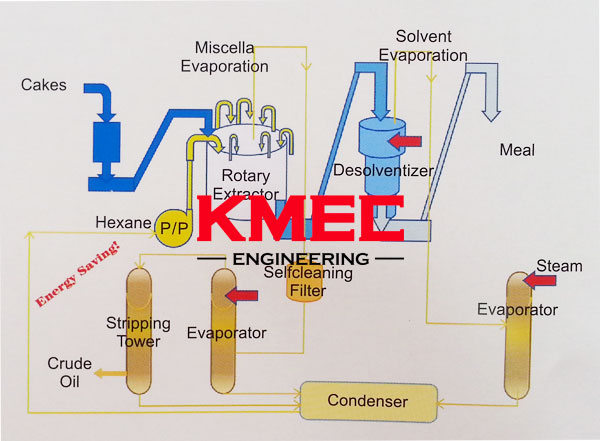
5 Factors that Influence the Solvent Extraction Process
The solvent extraction process is affected by a number of factors. However, the five factors below that are of any real significance.- Seed Water Content: Being a polar substance, water interferes with wetting of the seed surface and solvent penetration into the seed. In addition, it reduces diffusion. What is needed, however, is a certain degree of residual moisture to maintain seed flake elasticity and to prevent them from crumbling, which would make it difficult for solvent to penetrate the seed.
- Particle Size and Shape: First of all, the shape of particles in the extraction material must be such as to allow solvent to flow freely, without any great resistance. Secondly, the particle size must allow the best possible extraction from each individual particle, by minimising diffusion pathways. Seed must not be presented in the form of meal, as this would make solvent percolation impossible.
- Amount of Solvent: The quantitative ratio of solvent to extraction material will depend on seed composition. Generally, the quantity of extraction solvent increases in proportion to the raw fiber content in the seed. The miscella concentration also plays a further role. As a general rule, the higher the latter, the less energy is needed to remove solvent at the end of the process.
- Extraction Temperature: High temperatures reduce solvent viscosity and increase extract solubility in the solvent. Reduced solvent viscosity and enhanced solvent function at high temperatures make for improved extraction. Whilst there may well be no major differences, it is worth using heated extraction agents. The increase in oil yield outweighs the cost of heating the solvent.
- Extraction Time: The extraction time has some bearing upon the degree of extraction and will depend on the nature and structure of the extraction material.
After the solvent extraction process, the de-oiled oilseed material may be in the shape of flakes, cake particles or expanded pellet particles soaked with solvent. The de-oiled oilseed material typically contains 55 to 70 weight % dry solids, 25 to 35 weight % residual solvent, 5 to 10 weight % moisture and less than 1 weight % residual oil. The de-oiled oilseed material is normally at atmospheric pressure and 55 to 60ºC in temperature. In many cases the de-oiled oilseed material contains anti-nutritional factors that can inhibit digestion. As is, the de-oiled oilseed material has no commercial value, is unsafe to transport, and requires further processing.
Oil Extraction System
Most of the oil extraction systems are located near the farm fields which supply the oilseeds, or on ports or rail ways suitable to moving the very large volumes of oilseed and oil products. The extraction system can be generally put into two categories, one is direct solvent extraction, the other is a pre-press system followed by solvent extraction.
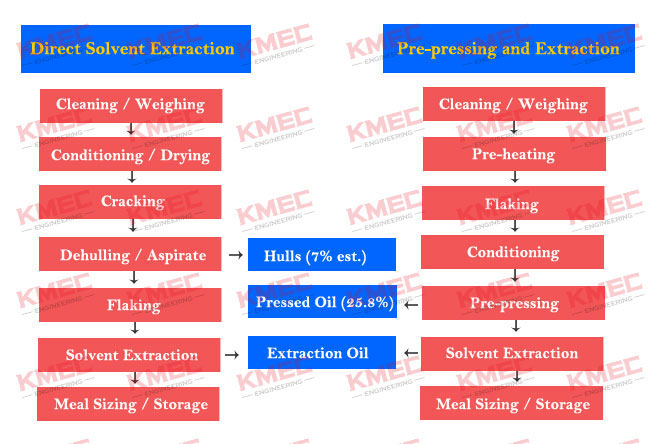
The seeds differ in that soybeans have about 20% by weight of oil, and rapeseed has about 40% oil. The higher oil products often require an added step called pre-pressing. Put simply, the high oil content makes it difficult to adequately flake the oilseed and cook it for solvent extraction without oil coming free of the seed and fouling equipment. Furthermore, the 40% oil content would require much more than the optimum energy for removal of solvent from miscella in extraction. Therefore, the screw press technology is used before extraction to better prepare the high oil seeds for the extraction process. It is partly practical experience and partly better balancing or optimization of the plant for low energy – but most high oil percent seeds have pre-press systems before extraction. Such seeds are commonly rapeseed, canola, sunflower, safflower, and the like.
Releded solvent extraction Machinery
Get In Touch

